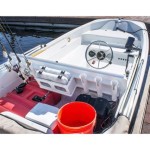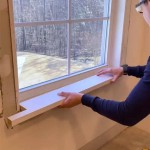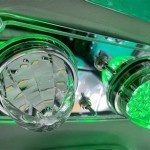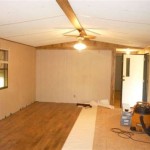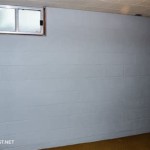How Does an Interior French Drain Work?
An interior French drain, also known as an interior weeping tile system or sub-floor drainage system, is a common waterproofing solution used to manage and redirect groundwater that seeps into basements. Understanding its functionality and how it operates is crucial for homeowners experiencing basement moisture problems. The system provides a pathway for water to relieve hydrostatic pressure and exit the basement before causing significant damage. The premise involves intercepting water at the perimeter of the foundation and channeling it to a sump pump, which then discharges the water away from the building.
The need for an interior French drain arises when exterior waterproofing measures are insufficient or impractical. In some cases, the soil surrounding a foundation is highly permeable, allowing water to readily reach the foundation walls. Other reasons include cracked foundations, failed exterior drainage systems, or high water tables. If exterior excavation and waterproofing are not feasible due to landscaping, adjacent structures, or budget constraints, an interior French drain presents a viable alternative.
Key Components and Installation
The installation of an interior French drain involves several critical steps, each contributing to its overall effectiveness. The process commences with jackhammering a trench around the perimeter of the basement floor, adjacent to the footer. The width and depth of the trench can vary depending on the expected water volume but typically range from 6 to 12 inches wide and deep. Care is taken to not undermine the structural integrity of the foundation wall. The debris is then carefully removed, leaving a clean channel for the drain system.
Next, a layer of gravel is placed at the bottom of the trench. This gravel layer serves multiple purposes. It provides a stable base for the perforated drain pipe, facilitates water flow, and acts as a filter to prevent soil particles from clogging the drain. The gravel used is typically washed and graded to ensure proper drainage and filtration. The depth of the gravel layer is usually several inches, sufficient to completely encase the perforated pipe.
The core element of the system is the perforated drain pipe. This pipe, typically made of PVC or corrugated plastic, is strategically placed on top of the gravel bed. The perforations, or small holes, allow water to enter the pipe from the surrounding soil. The pipe is sloped slightly towards the sump pump location to facilitate gravity-driven water flow. The size and type of pipe used are selected based on the anticipated water volume. The pipe sections are connected using appropriate fittings, ensuring a watertight seal to prevent leakage.
Once the perforated pipe is in place, it is covered with another layer of gravel. This upper gravel layer further enhances filtration and drainage. It prevents debris from entering the pipe through the perforations and maximizes the surface area available for water collection. The gravel should completely encapsulate the pipe, providing a consistent and porous medium for water to migrate towards the drain.
Finally, a layer of filter fabric, also known as landscape fabric or geotextile fabric, is placed over the gravel. This fabric serves as a barrier to prevent soil and sediment from entering the gravel bed and clogging the system. The fabric is carefully overlapped to ensure complete coverage and is secured in place. This fabric is critical for long-term performance, minimizing the need for future maintenance and system cleaning.
The trench is then filled with concrete, leaving a small gap between the new concrete and the existing wall, which allows the wall to breathe and dry properly. This gap also accommodates any minor settling or movement of the foundation. The new concrete should be carefully finished to blend seamlessly with the existing basement floor.
Water Management and the Sump Pump
The collected water within the interior French drain system flows by gravity towards a sump pit. The sump pit is a basin, typically made of plastic or concrete, installed at the lowest point of the drainage system. It serves as a collection point for the water before it is pumped out of the building. The sump pit is usually located in a discreet corner of the basement, chosen for its proximity to an exterior discharge point.
The sump pump is the heart of the water removal process. It is a submersible pump placed within the sump pit. The pump is activated by a float switch, which rises as the water level in the pit increases. When the water level reaches a predetermined point, the float switch triggers the pump, initiating the water removal process. The pump then discharges the water through a discharge pipe to an exterior location away from the foundation. The exterior discharge point is carefully selected to prevent water from re-entering the building or affecting neighboring properties.
Sump pumps come in various sizes and capabilities, typically measured in gallons per minute (GPM). The appropriate pump size is determined by the volume of water expected to enter the sump pit. Factors such as the water table level, soil permeability, and rainfall patterns influence the pump's capacity. A backup sump pump is often recommended to provide redundancy in case of primary pump failure, especially during periods of heavy rainfall or power outages. Backup pumps may be powered by battery or connected to a separate power circuit.
Regular maintenance of the sump pump is crucial for ensuring its continued functionality. This includes periodically checking the pump and float switch for debris, cleaning the sump pit, and testing the pump's operation. The discharge pipe should also be inspected to ensure it is free of obstructions and properly directing water away from the foundation. Neglecting sump pump maintenance can lead to pump failure and subsequent basement flooding.
Benefits and Considerations
An interior French drain offers several benefits as a basement waterproofing solution. It effectively manages groundwater and prevents it from entering the living space, contributing to a drier and healthier environment. Reduces the risk of mold and mildew growth, which can cause health problems and damage building materials. Prevents structural damage to the foundation caused by hydrostatic pressure. Allows for the utilization of basement space for storage or living purposes.
However, it is important to acknowledge the limitations and considerations associated with this system. The system is most effective in situations where water infiltration occurs at the perimeter of the basement. It may not be suitable for addressing leaks originating from other sources, such as cracks in the foundation walls above the floor level or plumbing leaks. Installation of the system requires jackhammering and concrete work, which can be disruptive and generate dust and noise. The system relies on a functioning sump pump, which requires electricity and is subject to mechanical failure. Regular maintenance of the sump pump is essential for ensuring its continued operation.
The effectiveness of an interior French drain depends on proper installation and drainage. The system must be correctly sized and designed to handle the anticipated water volume. The perforated pipe must be properly sloped and connected to the sump pit. The gravel and filter fabric must be carefully selected and installed to prevent clogging. Poor installation or inadequate drainage can render the system ineffective and lead to recurring moisture problems.
In some cases, an interior French drain may not be the most appropriate solution. If the primary source of water infiltration is above-ground, addressing the source of the leak directly may be more effective. For example, repairing cracks in the foundation walls or improving surface drainage around the building can prevent water from reaching the basement in the first place. Additionally, in areas with very high water tables, an exterior waterproofing system may be necessary to provide comprehensive protection.

Footing Drain Interior French Pros And Cons Sani Tred

How Do Interior French Drains Work Learn More Steel City Waterstoppers Foundation Repair

How Does A French Drain Work The Real Seal

Expert French Drain Installation In Ny Nj Pa Vulcan

Is A French Drain The Solution For Wet Crawl Space Seattle Times

French Drain Vs Waterguard Interior Drainage System

Best French Drain Repair Nj Installation

How Does A French Drain Work The Real Seal

Drain Tile System Installation Drainage Culvert Pipe French Catch Basin Covers

How A French Drain Basement Keeps Your Home Dry And Safe
Related Posts

